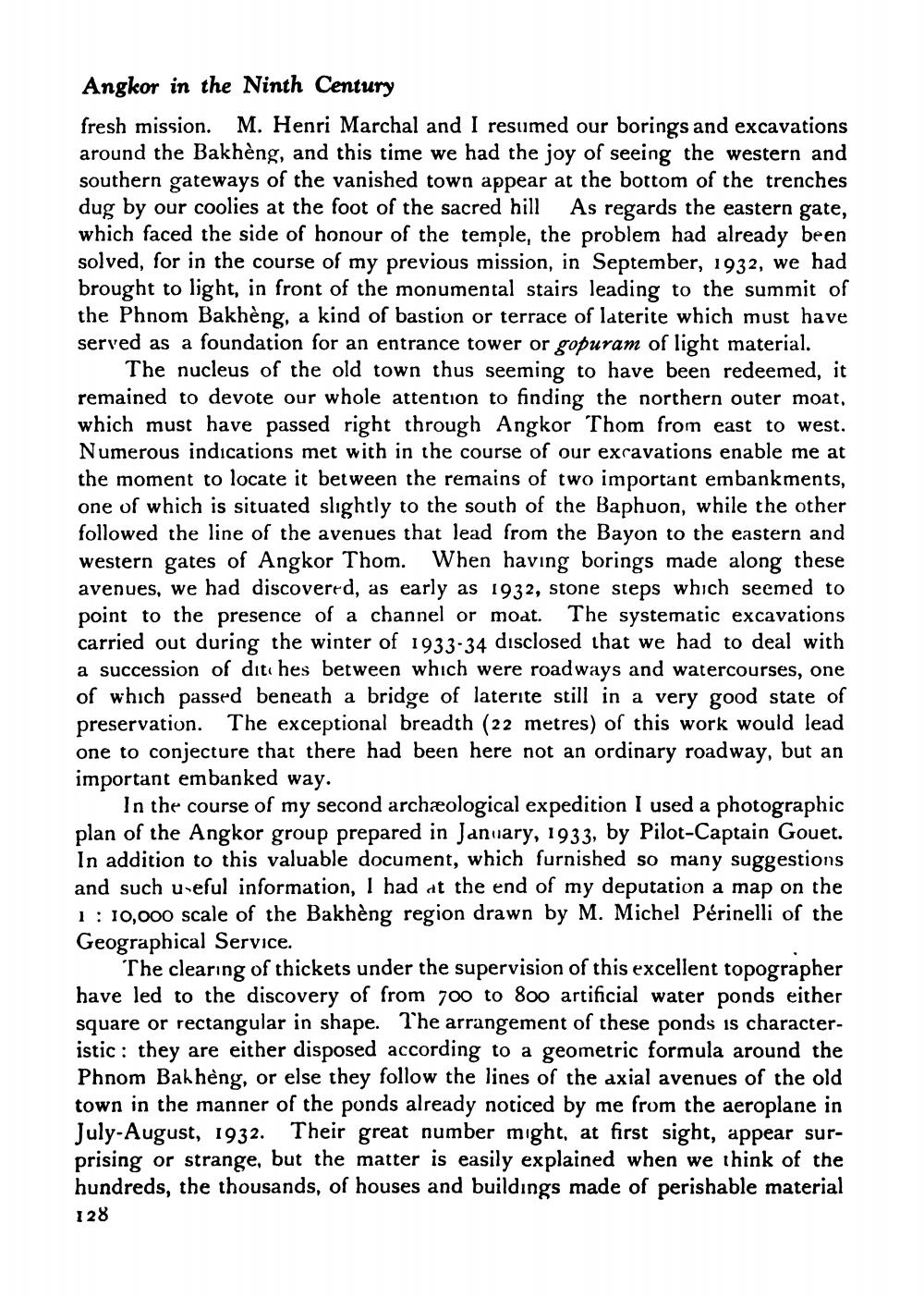________________
Angkor in the Ninth Century fresh mission. M. Henri Marchal and I resumed our borings and excavations around the Bakhèng, and this time we had the joy of seeing the western and southern gateways of the vanished town appear at the bottom of the trenches dug by our coolies at the foot of the sacred hill As regards the eastern gate, which faced the side of honour of the temple, the problem had already been solved, for in the course of my previous mission, in September, 1932, we had brought to light, in front of the monumental stairs leading to the summit of the Phnom Bakhèng, a kind of bastion or terrace of laterite which must have served as a foundation for an entrance tower or gopuram of light material.
The nucleus of the old town thus seeming to have been redeemed, it remained to devote our whole attention to finding the northern outer moat. which must have passed right through Angkor Thom from east to west. Numerous indications met with in the course of our excavations enable me at the moment to locate it between the remains of two important embankments, one of which is situated slightly to the south of the Baphuon, while the other followed the line of the avenues that lead from the Bayon to the eastern and western gates of Angkor Thom. When having borings made along these avenues, we had discovered, as early as 1932, stone steps which seemed to point to the presence of a channel or moat. The systematic excavations carried out during the winter of 1933-34 disclosed that we had to deal with a succession of dit hes between which were roadways and watercourses, one of which passed beneath a bridge of laterite still in a very good state of preservation. The exceptional breadth (22 metres) of this work would lead one to conjecture that there had been here not an ordinary roadway, but an important embanked way.
In the course of my second archæological expedition I used a photographic plan of the Angkor group prepared in January, 1933, by Pilot-Captain Gouet. In addition to this valuable document, which furnished so many suggestions and such u-eful information, I had at the end of my deputation a map on the 1 : 10,000 scale of the Bakhèng region drawn by M. Michel Périnelli of the Geographical Service.
The clearing of thickets under the supervision of this excellent topographer have led to the discovery of from 700 to 800 artificial water ponds either square or rectangular in shape. The arrangement of these ponds is characteristic: they are either disposed according to a geometric formula around the Phnom Bah hèng, or else they follow the lines of the axial avenues of the old town in the manner of the ponds already noticed by me from the aeroplane in July-August, 1932. Their great number might, at first sight, appear surprising or strange, but the matter is easily explained when we think of the hundreds, the thousands, of houses and buildings made of perishable material 128




